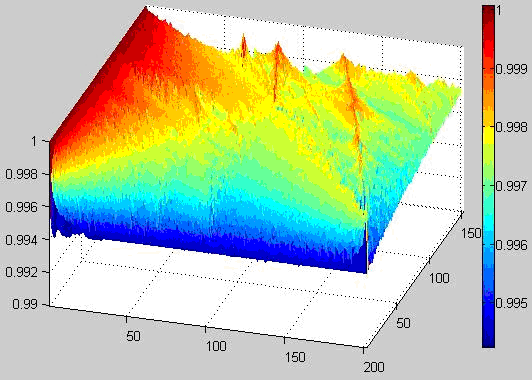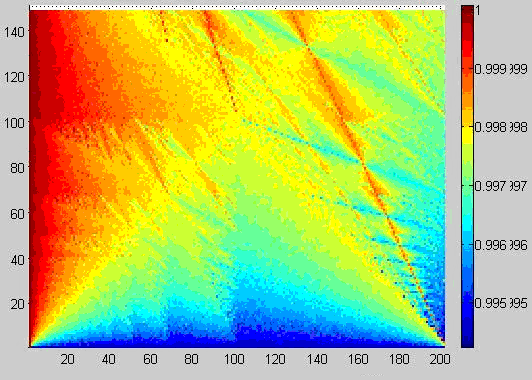BY LETTER
Sielena Uvalena Fractal
Technology > Technology Levels > High Tech / Hitech
Technology > Application > Software
Technology > Technology Type or Material > Virtual/Infotech
Technology > Application > Software
Technology > Technology Type or Material > Virtual/Infotech
 Image from Fendy Sutandio |
A fractal diagram showing computation time for a substrate capable of self-programming and re-wiring behaviours. In the early Information Age field-programmable gate-arrays (FPGA) were developed which could be reconfigured during use to perform a specific function; field-programmable gate-arrays were always less efficient but more flexible than application-specific computation units. Application-specific computation units may be million of times more powerful than a general purpose computation unit to solve a predefined kind of problem, but unsuitable for other tasks. Later processors could rewire themselves during a computation, in response to the environment and to a range of input data; this process is essential to thinking and learning in an artificially intelligent entity, but transforming processors into specialized forms takes time: there are a very large number of computation units inside an AI. There is a trade-off between building an optimum configuration for a particular task and the time taken to build that configuration.
If a processor array has been configured to match a specific computation job, it will need no time for reconfiguration. If the current specific task is not really different from the previous one, little reconfiguration may be required. If the task is totally different, radical reconfiguration is required, which will of course take more time. It is possible that a processor array already configured for a certain task is heavily occupied, while other computronium that is not as occupied will require a little ( or not so little ) reconfiguration, before it can do the task. Here is where we have to make some compromise.
So in the computation/processing optimization model associated with S/U fractal pattern, there are two ways for an algorithm to choose which configurable computronium should do a specific task:
1)Assign it into the computronium with the minimum computronium setting time.
or
2) Assign it into the computronium with the minimum estimated finish time.
In representing this problem, The x-axis (left-right), is a variable labelled with the arbitrary name Uvalena, which represents how likely the algorithm will assign a task into the computronium with the minimum computronium setting time. The z-axis (front-back), is a variable labelled with the arbitrary name Sielena, which represents how likely the algorithm will assign a task into the computronium with the minimum estimated finish time. The y-axis (top-down), is the time required for an computation/processing optimization algorithm to do required computation, given specific Uvalena and Sielena value.
So as to minimize the total time required for setting the computation units in order to get all the tasks done, a Sielena Uvalena Fractal can be used to decide how the AI will make the task allocation algorithm. Each time an important and complex task is required, the AI can generate and use such a fractal to decide how much rewiring and reprogramming of its own computronium is necessary to achieve the fastest performance.
Unlike biological minds, AI minds can inspect, analyse and record an arbitrary amount of information about their own internal workings, but once again this is a trade-off, as the hardware required to analyse and optimise every aspect of an AI's internal workings itself consumes processing power and takes time to operate.
 Image from Fendy Sutandio |
Appears in Topics
Development Notes
Text by Fendy Sutandio, adapted by Steve Bowers
Graphics by Fendy Sutandio, adapted by Steve Bowers
Initially published on 04 June 2008.
Graphics by Fendy Sutandio, adapted by Steve Bowers
Initially published on 04 June 2008.






